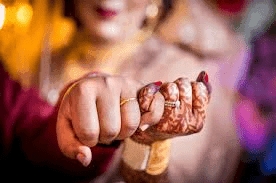Padma Bridge is the longest two-level road-rail bridge in Bangladesh. It aims to foster significant economic development and enhance the lives of millions by improving access to markets, education, and healthcare facilities. A day trip to the Padma Bridge can be a fascinating experience, especially if you’re interested in modern engineering marvels and the beautiful landscapes of Bangladesh.
Location
It connects Louhajang Upazila of Munshiganj, Zajira Upazila of Shariatpur, and a small part of Shibchar Upazila of Madaripur. It links the less developed southwest of the country to the northern and eastern regions.
Description of Padma Bridge
Strategically located, the Padma Bridge spans the mighty Padma River, one of the largest rivers in Bangladesh. The bridge extends approximately 6.15 kilometers in length and is designed to accommodate both road and rail traffic, thereby enhancing its utility as a vital transportation artery. The construction of the Padma Bridge is a story of resilience and innovation, marked by numerous engineering challenges and groundbreaking solutions.
The initial planning and feasibility studies for the bridge began in the early 2000s, but it wasn’t until 2014 that the actual construction commenced. Throughout its development, the project faced various hurdles, including financial constraints, environmental challenges, and technical difficulties associated with building on a river of such magnitude. Despite these obstacles, the bridge was successfully completed and inaugurated, becoming a symbol of national pride.
Interesting facts about the Padma Bridge include its dual-layered design, featuring a highway on the upper deck and a railway track on the lower deck. The bridge is supported by 41 piers, and its foundation piles descend deep into the riverbed, ensuring stability and durability. This remarkable feat of engineering embodies both the physical and socio-economic arteries of Bangladesh, promising to transform the overall landscape of communication and commerce in the nation.
How to Get There
To visit the Padma Bridge, you can travel by car, bus, or bike.
By Bus: From Jatrabari/Gulistan, you can find AC and non-AC buses heading to Madaripur, Shariatpur, or southern districts that cross the Padma Bridge.
By Car: You will need to hire a car to travel to the Padma Bridge from your residence. Note that vehicles are not allowed to stop on the bridge. If you exit the vehicle on the bridge, you will face penalties.
My Experience
I visited the Padma Bridge with my family. Early in the morning, we began our journey in a hired car. Our first destination was Vanga, Faridpur. As we crossed the Padma Bridge, we admired the view from the car. Although we could not stop on the bridge due to regulations, we paused after crossing to take some photos. Afterward, we reached Vanga, which is beautifully scenic. From Vanga Junction, we could travel to various southern destinations. We then planned to go to Mawa to enjoy hilsha fish for lunch. After about 20 minutes, we arrived at Mawa Ferry Ghat and entered a restaurant where we purchased a medium-sized hilsha fish. The shopkeeper prepared and fried the fish in front of us, and it was delicious. Hilsha is a popular dish in Mawa and near the Padma Bridge. Following lunch, we hired a boat to explore the river and even went under the bridge. The experience was unforgettable. Before heading home, we bought some hilsha to take back. In the evening, we returned home. I’ve visited several times and recommend driving at night to experience the captivating road and light scenery.
What to See
View the Bridge: The Padma Bridge is a stunning example of modern engineering. It’s one of the longest bridges in South Asia and offers impressive views of the Padma River. There are viewing points where you can stop and take pictures.
Boat Riding: To explore the Padma River, hire a boat. The view from under the bridge is particularly amazing.
Resorts: There are many resorts on the Mawa side of the Padma Bridge, though fewer on the Jajira side. These resorts provide a good place to relax.
Where to Stay
Resorts:
There are several resorts in Munshiganj where you can stay, such as:
– Dhali Amber Nivaas
– Padma Luxury Resort
– The Slow Garden
– Mawa Resort
Exploring Near the Padma Bridge

Jagadish Chandra Bose House: The house of Mr. Bose, a famous scientist from Bangladesh, is located in Munshiganj.
Arial Bill: Arial Bill is one of the largest wetlands (haor) in Bangladesh. A boat journey here is a must.
Dhali Amber Nivas Resort: A popular resort in Munshiganj with an entry fee of 400 BDT.
Villages: The nearby villages, especially in Munshiganj and Madaripur, feature unique house architecture.
Vanga: Vanga, in Faridpur, is known for its beautiful road junction.
What to Eat

Fried Hilsha Fish at Mawa: Many people visit the Padma Bridge primarily to enjoy hilsha fish in Mawa. You can purchase a fish, which is then cut and fried fresh by the shopkeeper.
Sweet: Bikrampur’s Vaggokul sweet is very popular. Once you try it, you may want to eat several pieces.
Matha: Matha, a drink made from yogurt, sweeteners, water, and other ingredients, is a specialty in Munshiganj. It is a must-try at every occasion.
Tips for the Trip
Weather: Check the weather forecast before your trip. The Padma Bridge can be visited any time of the year.
Safety: Ensure your vehicle is in good condition and keep an eye on traffic updates. If using public transport, choose reputable services.
Permissions: Verify if any permissions or restrictions are required for close-up shots or drone photography, especially on the bridge.
Essentials: Carry essentials such as water, snacks, sunscreen, and a hat. Wear comfortable clothing and shoes suitable for walking.






